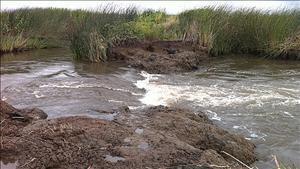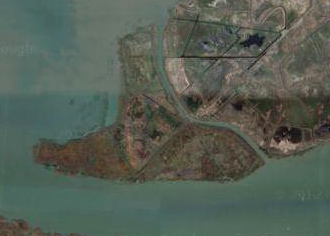Facing destruction from a broken levee, a Bay Area island owner needed some quick thinking to save his property from being swamped – but he faces challenges in getting his fix approved.
The owner of Chipps Island, found Solano County’s portion of the meandering Sacramento River, is perhaps the archetypical owner of a private island; a successful entrepreneur who founded a large outdoor advertising firm, John Sweeney’s independent character drew him to purchasing a total of three wild islands in the Delta area. A beautiful and scenic region in central California, the Delta is also prone to hidden dangers like flash floods, storm surges and, as has happened with a frightening regularity throughout the last decades, levee breaks resulting from extreme levels of rain.
Hurricane Katrina in 2005 was the ultimate example of the destruction that can result when levees – walls constructed to regulate the flow of water, also known as dikes – failed after being inundated by high water. In the case of the Sacramento River, into which flows, by some estimates, up to three-quarters of all of Northern California’s precipitation, the threat of flooding is never far away. To this end, a vast network of levees and channels was construction to drain away part of the river’s flow, diverting it south to populous cities in desperate need of new water sources, like Los Angeles.
With three islands in the Delta, John Sweeney had to act decisively last summer when a levee in nearby Spoonbill Creek broke, threatening his 1,000-acre Chipps Island. According to local news reports, at first he tried the conventional, approved method of fixing it: in essence, packing dirt in a horseshoe around the dike. “But every time we put the dirt on it, it would just wash back out at high tide,” Sweeney said. Next, he got creative. Taking a 40-foot steel shipping containing out to the levee break, he filled it with mud until it settled firmly at the bottom of the creek.
The large container worked like a charm, and Sweeney thought he was on to a great idea – a relief, given that all three of his low-lying islands were under threat from future breaks in levees . His simple solution, inspired by similar actions taken by the government during Hurricane Katrina, was also an inexpensive way for the Army Corps of Engineers to bolster levees during stormy seasons and protect the many coastal towns along the Delta.
In late 2011, he reached out to the Corps for approval of the shipping container levee fix. “If the Army Corps did a little research and saw this,” Sweeney said, “I think this could be a widely-appreciated way to fix any levee break.” Unfortunately, Sweeney would be frustrated by the Corps’ response – or lack thereof. After feeling brushed off when he reached out to discuss his idea, he ended up contacting the local media in an attempt to get the Corps’ attention.
The result was not what he had hoped for, however; citing that steel containers had not been assessed for their possible impact on marshland habitats, officials at the Corps eventually denied approval for the quick levee fix. Sweeney, who is planning on removing the container once he has built a stable mud levee behind it, told News 10 that he was disappointed by the decision, especially in that they did not seem interested in researching his idea.
However, Sweeney should not be too discouraged that his solution is being overlooked; with all of the difficulties involved in protecting islands against rising waters, the many private island owners facing similar threats may be looking at his idea very carefully, and taking note of his success.
Read more about this story: News 10




